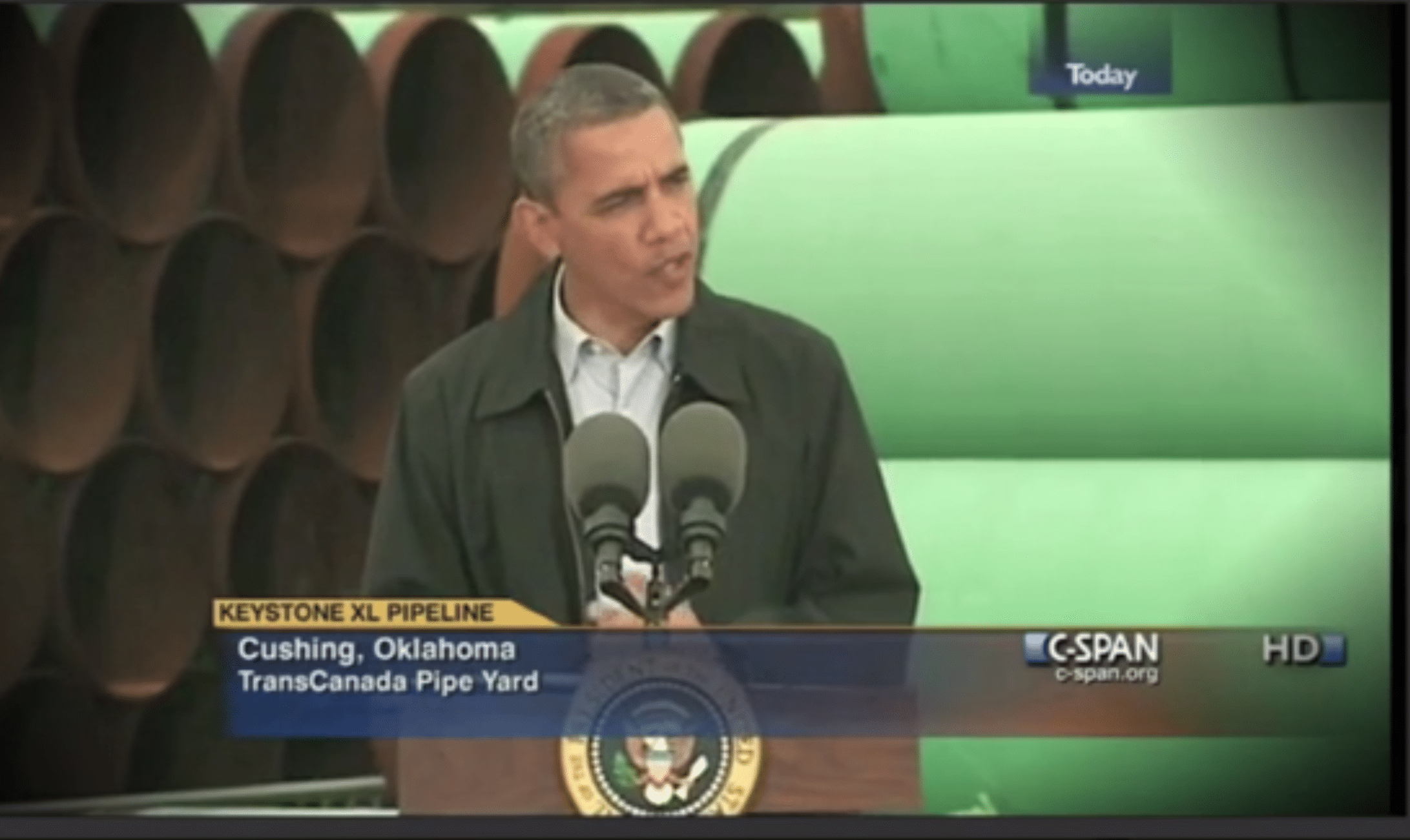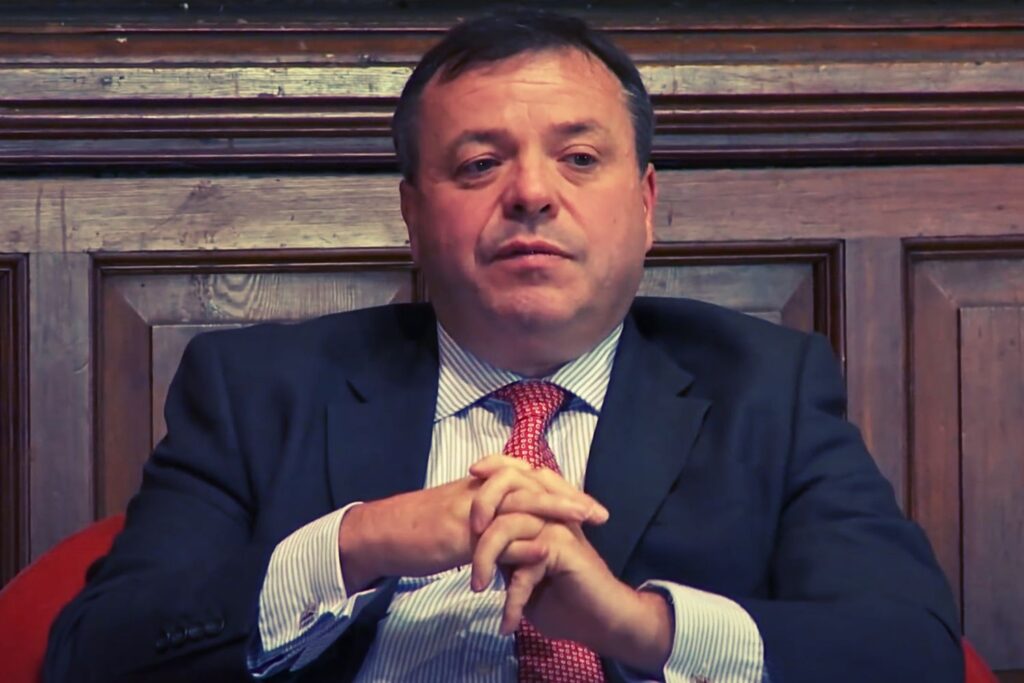On June 6, the U.S. Court of Appeals for the District of Columbia Circuit handed down a ruling that will serve as important precedent for the ongoing federal legal battles over the Keystone XL and Flanagan South tar sands pipelines.
In the Delaware Riverkeeper v. Federal Energy Regulatory Commission (FERC) case, judges ruled that a continuous pipeline project cannot be segmented into multiple parts to avoid a comprehensive National Environmental Policy Act (NEPA) review. This is what Kinder Morgan proposed and did for its Northeast Upgrade Project.
As reported on DeSmogBlog, the U.S. Army Corps of Engineers did the same thing to streamline permitting for both the southern leg of TransCanada’s Keystone XL and Enbridge’s Flanagan South. Sierra Club and co-plaintiffs were denied injunctions for both pipelines in October and November 2013, respectively.
Delaware Riverkeeper v. FERC dealt with breaking up a new 40-mile long pipeline upgrade into four segments. For the other two cases, the Army Corps of Engineers shape-shifted the two projects — both hundreds of miles long each — into thousands of “single and complete” projects for permitting purposes.
On the day of the Delaware Riverkeeper v. FERC decision, Sierra Club attorney Doug Hayes submitted the case as supplemental authority for the ongoing Flanagan South case.
On May 5, Hayes also submitted paperwork to appeal the Keystone XL South decision in front of the U.S. Court of Appeals for the Tenth Circuit, which was docketed by the clerk of Ccurt the next day.
Hayes told DeSmogBlog his side will file an opening brief for the appeal on July 30. It seems likely Delaware Riverkeeper v. FERC will be a key part of that appeal.
In a sign of the importance of the outcome for the oil and gas industry, the American Petroleum Institute (API) entered the Sierra Club v. Army Corps of Engineers case on Keystone XL as an intervenor on May 16, represented by corporate law firm Hunton & Williams.
At the federal level, Hunton & Williams lobbies on behalf of Koch Industries, a company with a major stake in tar sands leases and refining.
“No Uncertain Terms”
Hayes told DeSmogBlog that Delaware Riverkeeper v. FERC could prove a game-changer for the Keystone XL southern leg (now dubbed the Gulf Coast Pipeline Project) appeal, the Flanagan South decision and far beyond.
“Delaware Riverkeeper is important in many respects,” Hayes said. “In general, the D.C. Circuit is considered the second most powerful court in the country and here it held, in no uncertain terms, that agencies must analyze all parts of these interrelated projects under NEPA to get the full picture of the environmental impacts.”

Photo Credit: C-Span Screenshot
The case depicts a collision between long-standing principles of environmental law and President Barack Obama’s March 2012 Executive Order expediting pipeline reviews — an order issued six days after delivering a speech in front of the pipe segments that would two years later be pieced together as Keystone XL South, now open for business.
Executive Order 13604
Executive Order 13604, signed on March 28, 2012, said “agencies shall…coordinate and expedite their reviews…as necessary to expedite decisions related to domestic pipeline infrastructure projects that would contribute to a more efficient domestic pipeline system for the transportation of crude oil.”
The Army Corps of Engineers’ deployment of Nationwide Permit 12 — usually reserved for smaller infrastructure projects — served as the weapon of choice to “coordinate and expedite their reviews” for TransCanada‘s Gulf Coast Pipeline Project and Enbridge‘s Flanagan South.
In fulfilling the dictates of Executive Order 13604, both TransCanada and Enbridge have dodged doing a more robust NEPA analysis.
“The oil industry has gone to great lengths to break projects into thousands of smaller pieces to avoid a true analysis of pipelines’ environmental impacts,” Hayes said.

Doug Hayes; Photo Credit: Sierra Club Environmental Law Program
“This has been especially true of the Enbridge system, and of pipelines that are approved by the Corps using Nationwide Permit 12. In Flanagan South, NEPA was unquestionably triggered because the agencies prepared three separate EAs for different parts of the pipeline.”
In other words, the approach called for by Executive Order 13604 may no longer hold legal water.
“The issue is whether agencies can segment a project into smaller pieces, and prepare a narrow analysis for each part, without looking at an entire project in a single NEPA analysis,” said Hayes.
“The Delaware Riverkeeper v. FERC decision was a resounding ‘no.’ It held that a linear pipeline can only be ‘segmented’ into smaller components if the individual parts would have independent utility.”
Pipeline companies put “on notice”
Aaron Stemplewicz, Delaware Riverkeeper’s attorney for the case, said the court’s precedent-setting decision should put all pipeline companies “on notice.”
“The D.C. Circuit’s decision today should put other pipeline companies on notice that the practice of segmenting pipeline projects before the Federal Energy Regulatory Commission will no longer be tolerated,” he told New Jersey’s Star-Ledger.
As evidenced by the May 16 API intervention in the Sierra Club v. Army Corps of Engineers case, the oil industry has taken notice. So too has corporate law firm giant K&L Gates, issuing a memo on the Delaware Riverkeeper v. FERC ruling published June 20, just two weeks after the decision was handed down.
“Some may say, so what?,” wrote K&L Gates. “The projects are already built, so if the agency has to go through an academic and theoretical exercise, it has no real world implications. Those who think this do so at their own peril.”
“Future investors and developers should be concerned…[that] these decisions may well impact how FERC, and other agencies, consider future ‘related’ projects.”
Hunton & Williams, API‘s counsel for Sierra Club v. Army Corps of Engineers, also issued its own client alert on Delaware Riverkeeper v. FERC, serving as a prelude to what will be its ongoing involvement in chipping away at the ruling.
Clearly, both sides have taken notice. With both billions of dollars of industry profits and a sustainable planet at stake, to the victors go the spoils.
Photo Credit: schankz | Shutterstock
Subscribe to our newsletter
Stay up to date with DeSmog news and alerts







